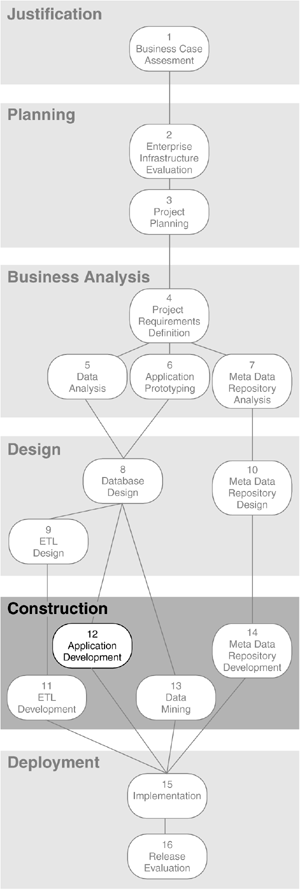Things to Consider Prototyping Results  Did we prototype the access and analysis components of the BI application? If so, what did we learn from the prototype? Did we prototype the access and analysis components of the BI application? If so, what did we learn from the prototype?  What portions of the application prototype can we save? What portions have to be redesigned? What portions of the application prototype can we save? What portions have to be redesigned?  Did we decide to develop the access and analysis components using the operational prototype as a rapid and iterative development method? Will this be the final iteration? Did we decide to develop the access and analysis components using the operational prototype as a rapid and iterative development method? Will this be the final iteration? Access and Analysis Tools  What access and analysis tools do we already have in place? Are we happy with them? What access and analysis tools do we already have in place? Are we happy with them?  Will the business people use an OLAP tool for multidimensional analysis? Will the business people use an OLAP tool for multidimensional analysis?  In what other ways will they analyze the data? Do we need to acquire another query or reporting tool? In what other ways will they analyze the data? Do we need to acquire another query or reporting tool? Skills and Training  What skill sets (beginning, advanced, expert) do the business people have? What type of additional training do they need? What skill sets (beginning, advanced, expert) do the business people have? What type of additional training do they need?  How many business people have already been trained on the access and analysis tools? How many more need training? How many business people have already been trained on the access and analysis tools? How many more need training?  Are they familiar with OLAP and multidimensional reporting concepts? Are they familiar with OLAP and multidimensional reporting concepts?  Do we need to implement a context-sensitive online help function for the access and analysis components of the BI application? Do we need to implement a context-sensitive online help function for the access and analysis components of the BI application? Scope and Project Requirements  Are our project requirements still the same? Or has the scope changed? Are our project requirements still the same? Or has the scope changed?  How many reports and canned queries do we need to develop? Which ones? How many reports and canned queries do we need to develop? Which ones?  Have we validated the necessary number of dimensions needed for those reports and queries? Have we validated the necessary number of dimensions needed for those reports and queries?  Do we know how the knowledge workers, business analysts, and business managers want to drill down and roll up when working with the data? Are their requirements similar or different? Do we know how the knowledge workers, business analysts, and business managers want to drill down and roll up when working with the data? Are their requirements similar or different? Web Considerations  Do we have to include a Web portal with this BI application? Do we have to include a Web portal with this BI application?  Have we developed Web portals before? Have we prototyped one? Have we developed Web portals before? Have we prototyped one?  What are the additional security requirements for the Web? Do we have the necessary firewalls and security packages installed? What are the additional security requirements for the Web? Do we have the necessary firewalls and security packages installed? Technical Considerations  Are the development and production environments configured the same or are they different? Are the development and production environments configured the same or are they different?  What are the differences? A different database management system (DBMS)? A different operating system? Different hardware? What are the differences? A different database management system (DBMS)? A different operating system? Different hardware? | 
 Did we prototype the access and analysis components of the BI application? If so, what did we learn from the prototype?
Did we prototype the access and analysis components of the BI application? If so, what did we learn from the prototype?